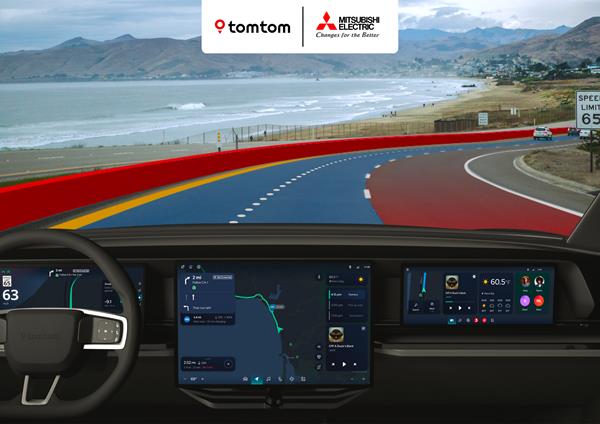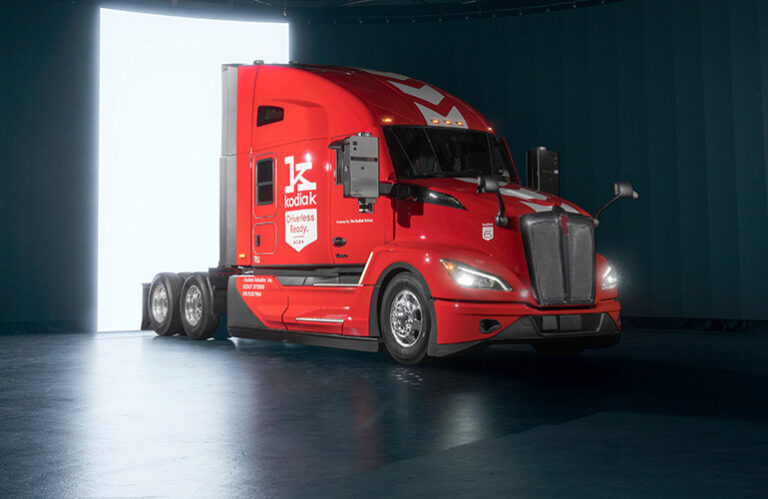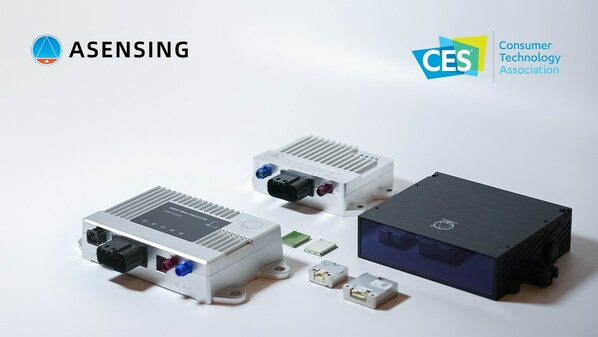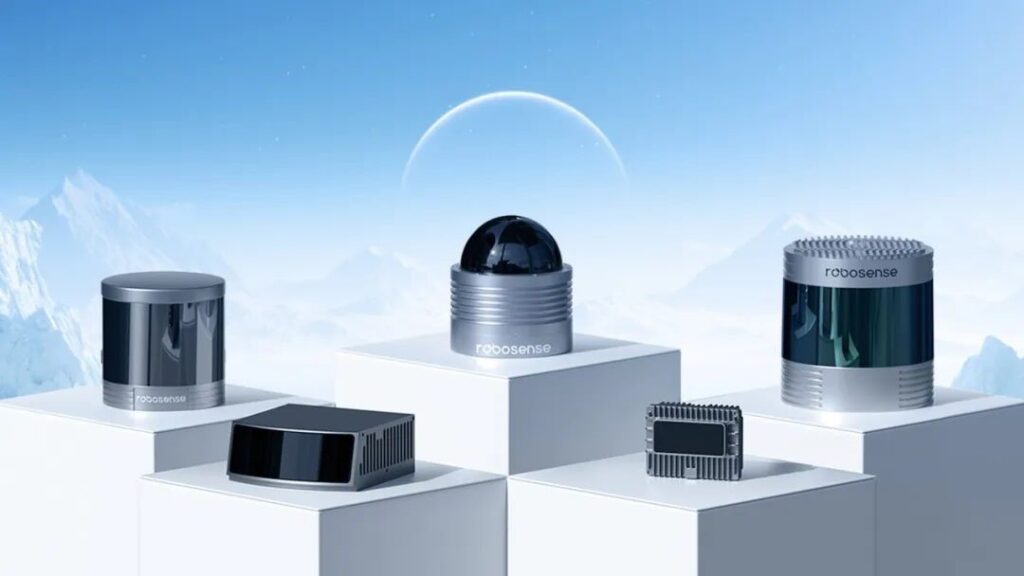
Vueron Newsletter
No. 80
2024.01.12
| TomTom and Mitsubishi Electric collaborate to advance Automated Driving | ||
| Kodiak emphasizes redundancy in sixth-generation autonomous semi-truck | ||
| ASENSING Unveils LiDAR at CES 2024 | ||
| RoboSense sets new annual LiDAR delivery records in 2023 |
1. TomTom and Mitsubishi Electric collaborate to advance Automated Driving
-
- TomTom and Mitsubishi Electric are collaborating to develop solutions for automated driving.
- TomTom’s High Definition (HD) Map will power Mitsubishi Electric’s High-Definition Locator hardware.
- Mitsubishi Electric’s High-Definition Locator is a GPS-based vehicle positioning system using quasi-zenith satellites for high accuracy.
- The collaboration aims to provide accurate data crucial for automated driving, including advanced driver assistance systems (ADAS) applications.
- TomTom’s HD Map technology incorporates GPS probes, cameras, and sensors data, enabling automated driving systems to anticipate the road ahead.
- TomTom’s HD Maps are used in millions of vehicles for Levels 1 to 2-Plus autonomous driving.
- The HD Maps are consistently updated, offering a detailed representation of the road and helping self-driving vehicles understand their surroundings.
- The collaboration aims to accelerate innovation in automated driving, utilizing up-to-date maps to enhance the safety of autonomous vehicles.

The collaboration recognizes the importance of detailed and up-to-date maps in the development and safety of autonomous vehicles. TomTom’s multi-sourcing strategy for HD Map data, including GPS probes and sensors, contributes to the effectiveness of automated driving systems.
2. Kodiak emphasizes redundancy in sixth-generation autonomous semi-truck
-
- Kodiak Robotics introduced its sixth-generation, driverless-ready semi-truck at CES.
- The self-driving truck is designed for scaled deployment and builds on five years of real-world testing, including 5,000 loads over 2.5 million miles.
- Kodiak will use the new truck for its driverless operations between Dallas and Houston in 2024.
- The autonomous semi-truck features redundancy in safety-critical functions, including braking, steering, and sensors, ensuring safety and control in case of failures.
- The trucks have redundant braking systems with three individual brake actuators and a dual-redundant steering system with two ZF actuators.
- Redundant power systems, split into two isolated subsystems, power the computers, sensors, and other electrical components.
- All Kodiak trucks are equipped with the Actuation Control Engine (ACE), a high-integrity safety computer for fallback in critical system failures.
- The sixth-generation truck features upgrades to Kodiak’s proprietary SensorPods, including higher-resolution lidars, additional radar sensors, and extra-bright hazard lights.
- The truck has 12 cameras, four lidar sensors, and six radar sensors, all processed using NVIDIA GPUs.
- Kodiak aims for compliance with safety regulations, including top-mounted hazard lights for road presence indication and microphones for detecting emergency vehicles.
- The company plans continuous improvements, including integrating an Ambarella CV3-AD AI domain control system.

The emphasis on redundancy in critical systems underscores the commitment to safety, a crucial aspect for widespread acceptance of autonomous vehicles. The integration of advanced hardware, such as the Ambarella CV3-AD AI domain control system, suggests a focus on continuous technological enhancement.
3. Luminar and Mercedes-Benz Expand Partnership to Formula 1 with the Mercedes-AMG PETRONAS Team
-
- Luminar, a global automotive technology company, collaborates with the Mercedes-AMG PETRONAS F1 Team.
- The partnership aims to integrate Luminar’s LiDAR technology into the Official FIA F1® Safety Car, with work commencing in 2024.
- LiDAR (Light Detection and Ranging) creates a detailed 3D map using lasers, enabling precise object detection at high speeds and adverse driving conditions.
- Luminar’s LiDAR has a higher wavelength, providing a detection range of up to 250 meters for road debris and 500 meters for objects ahead.
- The technology will be integrated into the roofline of the Mercedes-AMG GT Black Series, creating a real-time 3D map of the environment.
- Pending FIA and Formula 1 regulatory compliance, the LiDAR-equipped safety car aims to enhance the safety car driver’s ability to assess situations on the track at high speeds.
- Luminar’s technology, developed in partnership with Mercedes-Benz for production cars, is shared with the F1 team, showcasing performance and safety advantages.
- The Official FIA F1® Safety Car, featuring an initial LiDAR roof integration concept, is showcased at CES 2024.

The collaboration signifies applying advanced LiDAR technology, known for precise 3D mapping, in the high-performance context of Formula 1. Integrating LiDAR into the safety car aligns with the ongoing efforts in the automotive industry to leverage advanced technologies for improved safety.
4. ASENSING Unveils LiDAR at CES 2024
-
- ASENSING has introduced its LiDAR sensor at CES 2024, showcasing it alongside high-precision positioning products.
- The A2 LiDAR is designed for ADAS & autonomous driving, robotics, machinery, and other applications, featuring a small size, customizable features, and cost-effectiveness.
- The LiDAR system offers higher accuracy, angular resolution, and longer-range detection compared to radar and camera sensors.
- In 2023, nearly 600,000 LiDARs were shipped to passenger vehicles in China, a significant increase from around 160,000 in 2022.
- The global LiDAR market for automotive is projected to grow from $317 million in 2022 to nearly $4.5 billion in 2028, according to Yole Group.
- ASENSING, with over a decade of experience, exhibits other positioning products, including Integrated Navigation System, Inertial Measurement Unit, and High-Precision GNSS Positioning Module.
- The company has nominations for car models from over 30 OEMs globally and holds a market share of over 60% in high-precision positioning in China’s automotive industry.

ASENSING’s introduction of the A2 LiDAR sensor aligns with the growing demand for LiDAR technology in various applications, including autonomous driving and robotics. The LiDAR system’s advantages over other sensors, such as higher accuracy and longer-range detection, highlight its significance in Level 2+ ADAS and autonomous driving systems.
5. RoboSense sets new annual LiDAR delivery records in 2023
-
- RoboSense, a Chinese LiDAR solution developer, achieved three new product delivery records, positioning itself as a leader in the global LiDAR industry.
- In December 2023, RoboSense delivered 72,200 units of LiDAR products, resulting in a quarterly volume of 151,000 units in Q4, a 545.3% increase compared to the same period in 2022.
- The annual LiDAR delivery volume for 2023 reached 256,000 units, marking a substantial 349.12% year-on-year increase, surpassing the 250,000-unit mark for the first time in the company’s history.
- RoboSense has accumulated nearly three years of mass production experience in automotive factory installations, showcasing technological prowess and scalability in in-car deployments.
- Throughout 2023, RoboSense excelled in customer applications and made significant strides in the global implementation of intelligent driving technologies.
- In December 2023 alone, RoboSense achieved nearly 71,000 units of automotive LiDAR deliveries, surpassing previous monthly records.
- In Q4 2023, RoboSense’s automotive LiDAR delivery reached approximately 147,500 units, marking an exceptional 714.92% increase year-on-year.
- In the ADAS domain, the company’s annual automotive LiDAR deliveries stood at roughly 240,000 units, reflecting a phenomenal 550.41% year-on-year surge from 2022.

The exceptional growth in ADAS-related LiDAR deliveries suggests an increasing integration of LiDAR technology in advanced driver assistance systems, reflecting the industry’s trend towards enhanced safety and autonomous capabilities.
*Contents above are the opinion of ChatGPT, not an individual nor company

